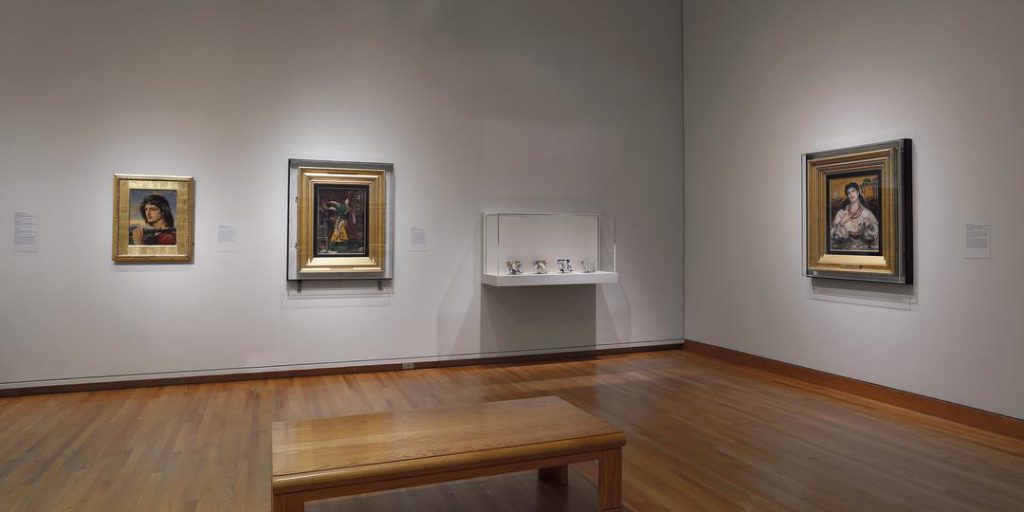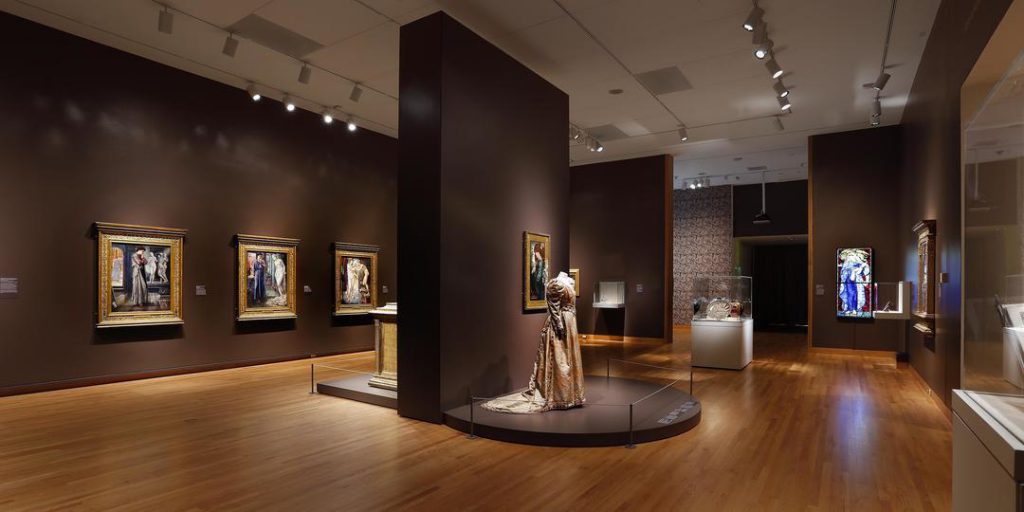10 Facts About the Pre-Raphaelite Brotherhood
From the intricate silver objects and the dazzling jewelry to the vibrant paintings on display, there is so much to see and learn about in Victorian Radicals: From the Pre-Raphaelites to the Arts & Crafts Movement. For instance, did you know the 15th-century painter Van Eyck’s was an inspiration to the Pre-Raphaelites? Here are some facts that you may not know about the rebellious artists behind the Pre-Raphaelite Brotherhood. Read up and then come see this stunning exhibition on view through September 8!

- The Pre-Raphaelite Brotherhood began in 1848 and was founded by William Holman Hunt, John Everett Millais, and Dante Gabriel Rossetti.
- The founders of the Pre-Raphaelite Brotherhood were all students at the Royal Academy but they rebelled against the ideas and methods of The Academy and would often skip classes to have secret meetings at their homes.
- The name “Pre-Raphaelite Brotherhood” came from their belief that the “Golden Age of Art” came before Raphael and the Renaissance.
- The Pre-Raphaelite Brotherhood eventually grew and received tremendous support from writer and critic John Ruskin.
- When the Pre-Raphaelite Brotherhood formed, the members were all between the ages of 18–23 years old.

- In 1850 the Pre-Raphaelites launched an illustrated journal called “The Germ” meant to “sow the seeds of a widespread reform of society through advanced art and design.” It included poetry, essays, and short stories as well as etchings. The journal discontinued after four issues.
- Although the brotherhood by definition excluded women, influential female figures such as Elizabeth Siddall, Rosa Brett, and Anna Blunden made art within the wider circle of the Pre-Raphaelites.
- John Millais’ muse, Effie Gray, was the wife of his mentor John Ruskin. While painting and modeling, Millais and Grey fell in love. Gray divorced Ruskin and married Millais a year later!
- Pre-Raphaelite art sparked controversy because their realism was seen as ugly and jarring by some critics and writers. Charles Dickens wrote that Millais’ “Christ” painting was “a hideous, wry-necked, blubbering, red-haired boy in a nightgown.”
- The Pre-Raphaelite Brotherhood lasted five years and was dissolved by 1853 as the young members grew in different directions. But the movement had a long-lasting impact and inspired the formation of the Arts & Crafts Movement.
– Ana Osorno, SAM Communications Intern
Images: Installation view of Victorian Radicals: From the Pre-Raphaelites to the Arts & Crafts Movement at Seattle Art Museum, 2019, © Seattle Art Museum, photo: Mark Woods.
